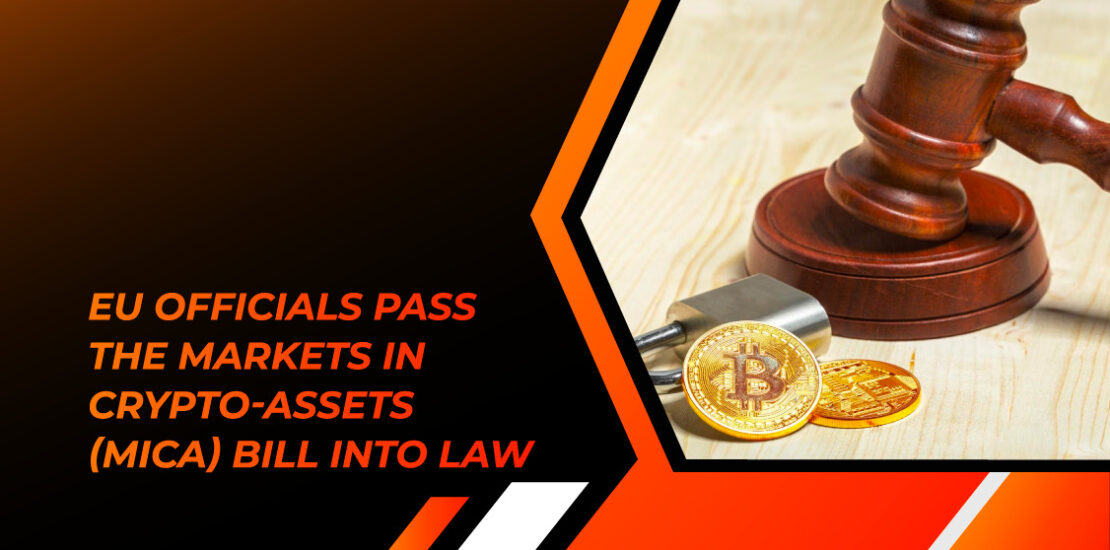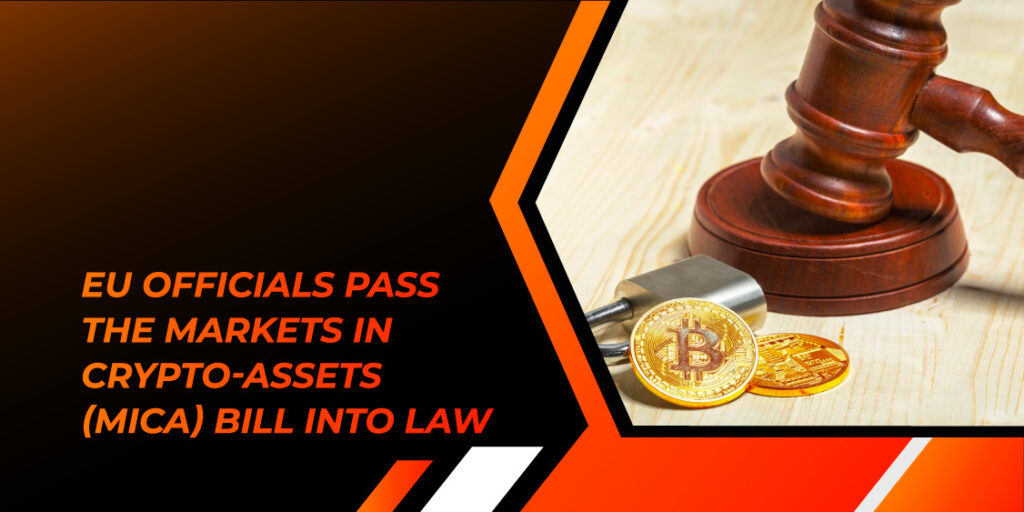- June 3, 2023
- Posted by: [email protected]
- Category:


MiCA, also known as the Markets in Crypto-Assets, was launched in 2020 as a regulatory initiative to provide a unified framework for crypto assets throughout European Union (EU) member states. EU officials recently signed the MiCA bill into law after getting final approval from finance ministers, marking a crucial milestone in the long-awaited implementation of cryptocurrency laws.
On May 31, the signing ceremony took place, with Sweden’s minister for rural affairs, Peter Kullgren, and European Parliament President Roberta Metsola putting their signatures on the document. This event comes approximately three years after the European Commission initially introduced the MiCA measure. Throughout the legislative process, the MiCA framework underwent extensive debates and discussions among EU lawmakers, moving through various bodies within the EU before finally obtaining approval in 2023.
The primary objective of MiCA is to establish a consistent regulatory framework for crypto assets within the EU member states. With the signing ceremony completed, the framework is expected to come into effect upon its publication in the Official Journal of the European Union. The practical implementation of many of MiCA’s regulations on crypto firms is anticipated to commence in 2024.
In light of the 2022 crypto market crash and prominent bankruptcies of firms such as FTX, BlockFi, and Celsius, some EU lawmakers have argued that a more comprehensive framework is necessary. Consequently, European Central Bank President Christine Lagarde has proposed the development of a “MiCA II,” building upon the groundwork laid by the initial framework. This proposed expansion would likely address the emerging challenges and dynamics in the crypto industry, incorporating lessons learned from recent market events.
As MiCA progresses from being a drafted initiative in 2020 to a signed law in 2023, the EU takes a significant step towards establishing regulatory clarity and harmonization in the realm of crypto assets. The framework’s implementation, coupled with potential future iterations, is aimed at fostering a secure and stable environment for cryptocurrency activities within the European Union.



